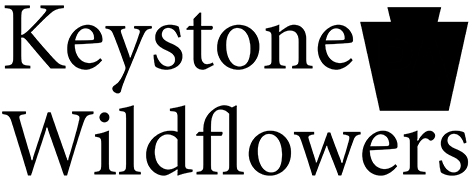Deer Resistant
Showing 25–48 of 50 results
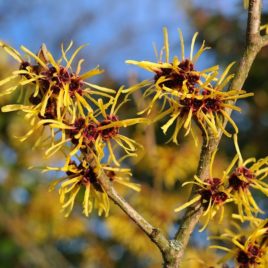
Hamamelis virginiana
Hamamelis virginiana, or Witch Hazel, is a 15-20 foot, native woody deciduous shrub of eastern US with yellow fall foliage and fragrant yellow flowers appearing in late fall to early winter. Witch Hazel prefers full to part shade and medium, … Continued
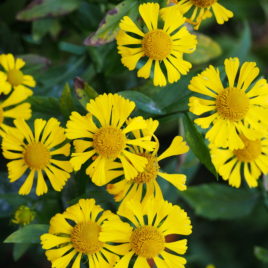
Helenium autumnale
Helenium autumnale, or Dog Toothed Daisy, is a 4-5 foot tall perennial preferring full to part sun and moist to wet rich soils. The bright yellow flowers of Dog Toothed Daisy appear in late summer. It is a great plant … Continued
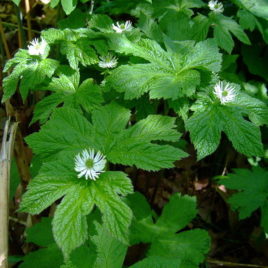
Hydrastis canadensis
Hydrastis canadensis, or Goldenseal, is a 1-foot tall woodland native perennial ground cover preferring shade to part sun and moist to well-drained rich in organic matter. Ornamental maple-like leaves and raspberry-like fruit appear atop its upper leaves in late summer. … Continued
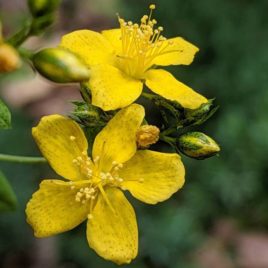
Hypericum punctatum
Hypericum perforatum, or Dotted St. John’s Wort, is a 1-3 foot tall common perennial preferring medium to well-drained, mesic soils and full to part sun. The plant’s yellow flowers with black dots and bushy stamens appear in late June to … Continued
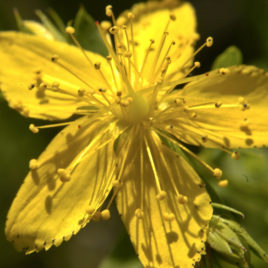
Hypericum pyramidatum
Hypericum pyramidatum, or Great St. John’s Wort, is a 2-5 foot tall perennial preferring moist to wet soils and full to part sun. Great St. John’s Wort’s large two-inch yellow flowers with bushy stamens appear in late June to August. … Continued
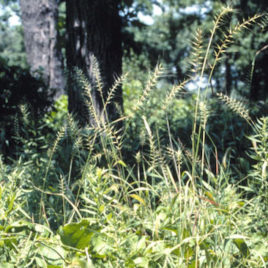
Hystrix patula
Hystrix patula, or Bottlebrush Grass, is an ornamental woodland species with airy, bottlebrush-like seed heads in mid-summer. Bottle Brush Grass grows best in dry to medium soils in shade to part sun. Bottlebrush Grass is a perfect grass for woodland … Continued
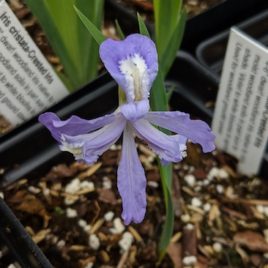
Iris cristata
Iris cristata, or Crested Iris, is a low-growing plant best grown in moist, well-drained soils in part shade. The Crested Iris produces pale blue, lilac or lavender iris flowers with gold crests on the falls on short stems.
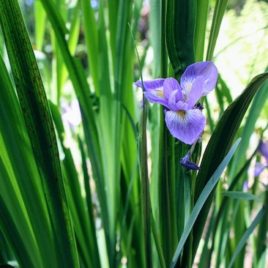
Iris versicolor
Iris versicolor, or Northern Blue Flag is a 2-3 foot wetland perennial preferring full to part sun in moist to wet soils. Northern Blue Flag’s blue flowers with yellow throats arise from sword-shaped leaves from June to July. The perennial … Continued
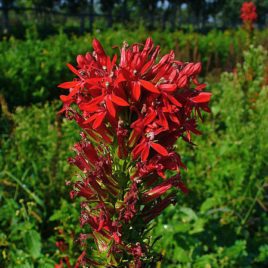
Lobelia cardinalis
Lobelia cardinalis, or Cardinal Flower, is a 3-4 foot tall showy perennial with luminous scarlet-red flower spikes that appear from July through September. Cardinal Flower prefers full to part sun and moist to wet soils. It is an excellent nectar … Continued
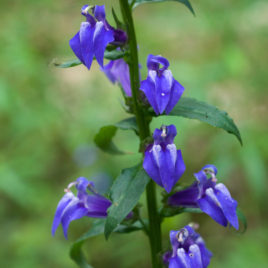
Lobelia siphilitica
Lobelia siphilitica, or Great Blue Lobelia, is a 2-3 foot perennial covered with deep blue flowers in late summer to early fall. Great Blue Lobelia prefers part to full sun in moist to wet soils. It attracts hummingbirds and butterflies … Continued
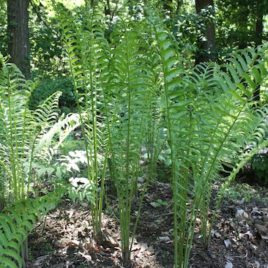
Matteuccia struthiopteris
Matteuccia struthiopteris, or Ostrich Fern, is a 2-6 foot tall fern with erect, dark green fronds. Ostrich Ferns prefer moist to wet soils in shade to part sun. The fern generally occurs in forested wetlands or along creeks. It sometimes … Continued
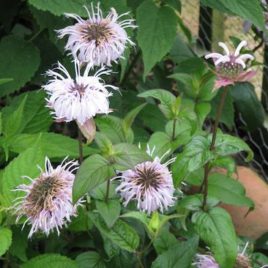
Monarda bradburiana
Monarda bradburiana, or Bradbury Monarda, is a two-foot perennial, shorter and more compact than the popular classic Wild Bergamot. Bradbury Monarda has a wonderful minty smell and attracts many pollinating insects and hummingbirds.
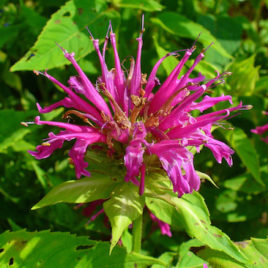
Monarda didyma
Monarda didyma, or Scarlet Beebalm, is a three-foot showy perennial with scarlet red blooms, appearing July to September. Scarlet Beebalm is easy to grow and prefers full sun to light shade in moist soils. Scarlet Beebalm is a great nectar … Continued
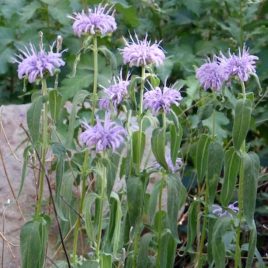
Monarda fistulosa
Monarda fistulosa, or Wild Bergamot, is a 2-4 foot adaptable and lovely perennial with a rounded habit. Wild Bergamot’s sweetly aromatic foliage produces violet blooms in summer. The perennial prefers moist fertile soils in full sun to light shade. Used … Continued
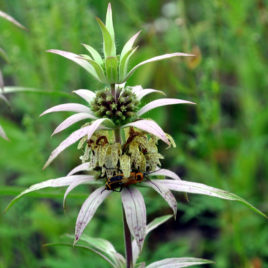
Monarda punctata
Monarda punctata, or Spotted Bee Balm, is a 2-3 foot perennial with pink, green and brown-purple spotted flowers in late summer. Spotted Bee Balm prefers moist to dry sandy or gravelly soils in sun to part sun. It is a … Continued
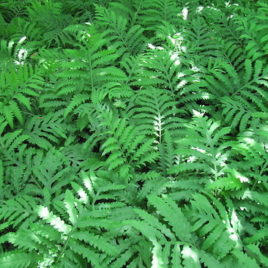
Onoclea sensibilis
Onoclea sensibilis, or Sensitive Fern, is a 1-3 foot tall fern with coarsely segmented, pale green triangular frond. Sensitive Fern’s fertile fronds resemble a cluster of woody, small grapes. The fern prefers moist to wet soils in sun (if constantly … Continued
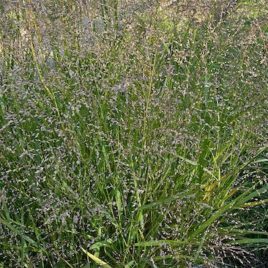
Panicum virgatum
Panicum virgatum, or Switch Grass, is a 3-4 foot warm season, clump grass found in dry to wet soils and grows best in sun to part sun. Switch Grass’ pink-tinged flowers are open and form a fine-textured cluster in mid-summer. … Continued
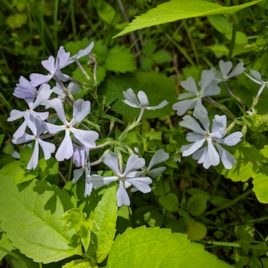
Phlox divaricata
Phlox divaricata, or Wild Blue Phlox, is a 1-2 foot woodland perennial with violet or lavender-blue flowers in spring. Wild Blue Phlox is a wonderful spring beauty for woodland gardens that slowly self sows itself.
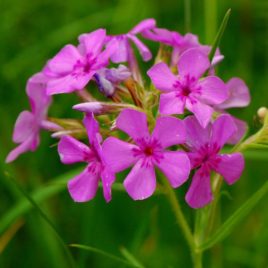
Phlox pilosa
Phlox pilosa, or Prairie Phlox, is a 1-1.5 foot herbaceous perennial that prefers fertile, moderately dry to moist, well-drained soils and full to part sun. Prairie Phlox spreads by rhizomes to form clumps, and the plant’s pink-purple blooms appear from … Continued
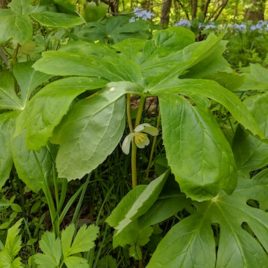
Podophyllum peltatum
Podophyllum peltatum, or May Apple, is a 1-2 foot woodland perennial with unique foliage. May Apple’s large, attractive white flowers bloom in May and June, but they are often hidden by its large leaves. The seeds are dispersed through consumption … Continued
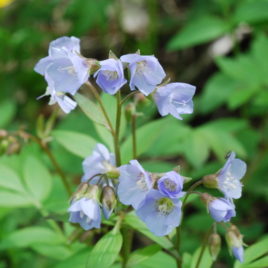
Polemonium reptans
Polemonium reptans, or Jacob’s Ladder, is a 1-2 foot, woodlander perennial with loose clusters of blue-violet, bell-shaped flowers blooming in early to late spring. Jacob’s Ladder prefers damp, organic soils in full to part shade.
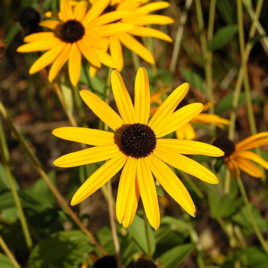
Rudbeckia fulgida
Rudbeckia fulgida, or Orange Coneflower, is a 2-4 foot, showy, golden-yellow blooming perennial for moist meadows and clearings. Orange Coneflower is one of the best summer-flowering natives. It prefers full to part sun and self-sows. The perennial is a favorite … Continued
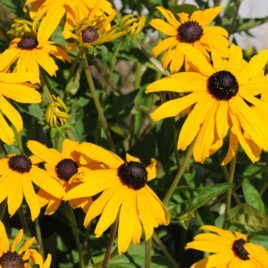
Rudbeckia hirta
Rudbeckia hirta, or Black-Eyed Susan, is a showy, easy to grow perennial ideal for meadows and prairies. Black-Eyed Susan’s extravagant, yellow blossoms attract native bees, pollinating flies, beneficial wasps and butterflies. The seed heads attract finches and other birds.
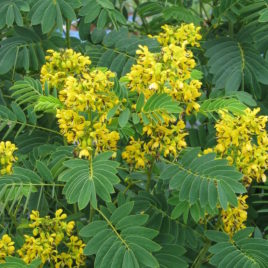
Senna hebecarpa
Senna hebecarpa, or Wild Senna, is a three-foot perennial producing bright yellow flowers from July to August. Wild Senna’s blooms attract many bees and butterflies in the late summer. In autumn, the perennial brings colorful leaves and black seed pods … Continued

